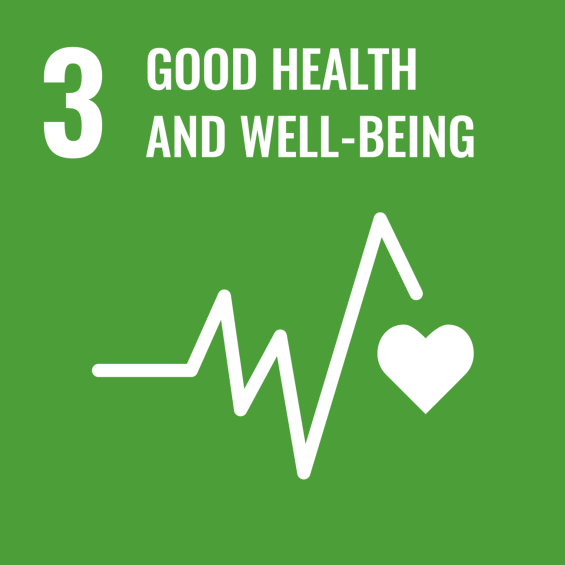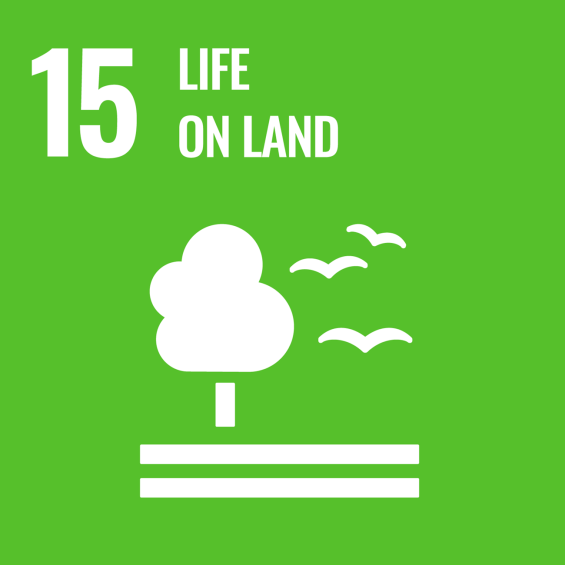UN Sustainable Development Goals
Thornton Tomasetti contributes in a significant way to many of the United Nations’ Sustainable Development Goals.
As a multipractice firm with more than 100 capabilities, we apply scientific and engineering principles across disciplines to solve the world’s challenges. Our impact stretches across many of the UN’s global goals.

By contributing to the development of affordable housing projects through research, 3D printing and design of projects – such as our work on Winter Landing in Portland, Maine – Thornton Tomasetti is working toward ending poverty (Target 1.4). Additionally, our Thornton Tomasetti Gives Back program and the Thornton Tomasetti Foundation support non-profit organizations like Bridges to Prosperity and invest in impoverished communities in underresourced regions of the world (Target 1.a). Thornton Tomasetti has a resilience practice that helps clients prepare, endure, adapt and thrive in a disruptive and changing world (Target 1.5).

We promote healthy living and well-being for our employees and the communities we serve through our work. Our employees receive excellent, affordable health insurance, annual fitness reimbursement, generous family leave for new parents, and free access to fitness, mindfulness and other wellness programs (Target 3.8). Our largest office, our New York headquarters, is certified through the WELL Health-Safety standard to ensure a safe work environment during the COVID-19 pandemic and beyond. Our team of sustainability experts has worked on more than 450 green building certification projects and helped clients realize their project certification goals toward standards like WELL, WELL Health-Safety, LEED, BREEAM and the Living Building Challenge, as well as others that seek to improve the health and well-being of building occupants – in projects as diverse as schools and airports. Our recent work on PlaNYC: Getting Sustainability Done includes 32 citywide initiatives with implementable actions that promote a healthier, more climate-resilient New York City for all.

This goal is woven into the fabric of Thornton Tomasetti. Founding Principal Charles Thornton launched the ACE Mentor Program of America (ACE) – a free after-school program designed to attract high school students into AEC careers – 28 years ago. Around 70% of ACE mentees are minority students, and over 83% of our offices in cities where ACE chapters exist participate (Target 4.4). Thornton Tomasetti, Inc., funds several scholarships for engineering students and offers regular internships, and the Thornton Tomasetti Foundation offers fellowships and scholarships for undergraduate students planning to pursue graduate studies in building engineering, design or technology (Target 4.b). Many of our professionals are educators at colleges and universities worldwide. Within our firm, we offer our employees discretionary tuition reimbursement toward a degree program or for relevant courses.

Thornton Tomasetti aspires to be an industry leader in fostering the professional advancement, success and visibility of women, not just at all levels of our firm, but also in the engineering field. A passion for gender equality and innovation through diversity drives our efforts to increase our number of female shareholders and employees, encourage women to become involved in company management, empower women through our Women@TT employee network group and encourage girls to enter STEM professions (Target 5.5). Our Equity, Diversity and Inclusion and Women@TT initiatives promote education of all employees regarding challenges faced by women as a gender underrepresented in our industry. These initiatives create opportunities to improve inclusion for women, foster a supportive community for women in our firm at all stages of their professional development, and help create a culture in which women are treated equitably and inclusively (Target 5.1). We support shared responsibility within the family by offering generous parental leave for both mothers and fathers (Target 5.4).

Our sustainable design projects – to which we apply our expertise to meet a broad range of sustainability objectives – contribute to the goals of clean water and sanitation. We assist our clients to meet green building certification water efficiency and net zero water credits through helping clients establish a water budget for their projects, along with utilizing programs like LEED and Living Building Challenge (Target 6.4). Our projects reduce water use and take a holistic water budget approach, especially in places like California, where drought is common. We provide services in green infrastructure and master planning natural habitat regeneration through our resilience practice (Target 6.6). These services support water solutions based on climatic analysis at a building and site level and provide for stormwater management (Target 6.5).

Thornton Tomasetti's work in decarbonization supports the goal of achieving affordable and clean energy globally. We are helping decarbonize the power sector and heavy industry by minimizing the risks associated with carbon capture and storage technologies and onshore and offshore energy facilities. We are also advancing technologies for more efficient energy storage and electrifying transportation systems (Target 7.a). Our engineers apply their expertise to solving the structural and functional challenges of alternative energy systems. Our sustainability experts guide clients to pursue embodied-carbon reduction, energy efficiency and net-zero-energy buildings (Target 7.3). We fund renewable energy by purchasing renewable energy certificates to reduce the greenhouse gas emissions generated by our offices’ electricity consumption, as well as by buying carbon offsets for our business travel (Target 7.2).

Attention to diverse and nondiscriminatory recruitment and company policy means that Thornton Tomasetti contributes to the goal of decent work and economic growth opportunities for all. Our company standard practices and healthy work environment support our employees. Our work on a variety of projects, across a range of sectors, contributes to economic growth (Target 8.1). Many of them, such as the Order of Saint Francis Healthcare headquarters in Peoria, Illinois, and Capital One Center in Washington, D.C., contribute to community development, offering new avenues for economic growth. Through our R&D and innovation accelerators, we contribute new technologies to the building sector and beyond, and we support entrepreneurship through AEC Angels, which funds technology start-ups (Target 8.2). We provide mentorship and scholarships to high school students, building a pipeline to the engineering and architecture professions (Target 8.6).

Thornton Tomasetti’s innovation engine, CORE studio, develops innovative and dynamic tools that improve efficiency and enable us to provide optimized client solutions. This positively impacts the quality of the infrastructure in the cities where we work. Every year, R&D funding is made available to employees in an open call for innovation developments. Our services contribute directly to the industry, innovation and infrastructure goal. Our resilience consulting helps clients prepare, endure, adapt and thrive in a disruptive and changing world. In addition, we’re working with hospitals and subways to develop resilient infrastructure designs, and we have numerous Institute for Sustainable Infrastructure-certified Envision Sustainability Professionals (Target 9.1). Our Applied Science practice engages in research, development and design to engineer practical solutions that manage risks across a range of military and civilian applications. One project is HyperloopTT, with the goal of creating the world's fastest, most efficient and most affordable end-to-end transportation solution (Target 9.4).

Thornton Tomasetti applies fair employment policies and equitable wages across our 40-plus offices and in our work in more than 50 countries. The company assesses pay parity to ensure income equity (Target 10.4). Our Equity, Diversity and Inclusion initiative and antidiscrimination policies help ensure equal opportunities for all employees (Target 10.2). We promote involvement in our ED&I employee resource groups across locations as far-flung as Mumbai, India, and Washington, D.C. By sharing our technology and expertise across locations, we contribute to greater equality among countries. Our designs of buildings and communities can have a secondary effect of increased social equity. Our service work in Rwanda with Bridges to Prosperity helps reduce inequality for underresourced and isolated communities (Target 10.3).

Thornton Tomasetti provides consulting services in resilience and sustainability, which positively impact the goal of sustainable cities and communities. Our work in all our practice areas requires that we honor our oath as engineers to protect public safety in the communities we serve. We’re committed to constructing a cleaner, healthier built environment by measuring, tracking and eliminating embodied and operational carbon in buildings and neighborhoods. We collaborate with other firms to create high-performance, low-energy facilities and communities that are efficient, comfortable and healthful at every stage of their life cycles. Our broad range of sustainability services – from water balancing, green building certification, circular economy guidance and healthy materials research to parametric energy analysis – contributes every day to creating sustainable cities and communities (Target 11.6). Our firm contributes widely to this goal through our work on affordable housing development (Target 11.1), transportation (Target 11.2), master planning and resilience (Target 11.3), building renewal (Target 11.4), community resilience and building forensics for natural disasters (Target 11.5).

We adopt sustainable practices and integrate sustainability information into our reporting and help others in our industry do the same. Per our environmental policy, we aim to apply our embodied-carbon specifications so that our projects use materials or adjustments to materials that are less carbon intensive than typical choices are (Target 12.6). Since buildings produce 40% of global CO2 emissions, and about 11% of those are from building materials, our embodied-carbon action plan commits us to advocate for the use of low-embodied-carbon or carbon-storing materials within our sector and adjacent industries. Another area of impact is the selection of healthy materials. We avoid the use of toxic materials on the Living Building Challenge Red List and endeavor to influence clients and partners to choose responsible material consumption and production (Target 12.7). We contribute to a circular economy through our master-planning projects, into which we incorporate circular economy principles (Targets 12.2, 12.5). Our work in carbon capture and storage reduces the release of greenhouse gases into the atmosphere (Target 12.4).

With our new initiative, Climate Action at Thornton Tomasetti, we're structuring many of our practices around providing decarbonization and resilience solutions (Target 13.1). We’re combating climate change through our internal policies, projects and services, and advocacy and partnerships. We participate in committees focused on reducing emissions in our industry and sponsor organizations like the Carbon Leadership Forum. We promote and apply creative means to reduce carbon in our projects and are committed to achieving carbon-neutral business operations and influencing policies and practices for sustainability and resilience in our industry and communities. We’re a recognized leader in moving consideration of embodied carbon to the forefront of our industry. We co-initiated the Structural Engineers 2050 Challenge, urging all structural engineers to understand, reduce and eliminate embodied carbon in their projects by 2050, and are an inaugural member of the Structural Engineers 2050 Commitment (Target 13.3). Our sustainable design, decarbonization and resilience services help clients combat climate change and its impacts (Targets 13.1, 13.3).

(All images courtesy United Nations)
Master planning is an opportunity to maximize long-term sustainability and resilience. We help communities develop sustainable master plans, encouraging biodiversity and habitat regeneration. We also recommend green spaces to co-benefit stormwater management and heat mitigation. This enhances wildlife corridors and creates habitats that may not have existed in urban settings (Target 15.9). We recognize that mass-timber construction has great potential to reduce embodied carbon and that reducing carbon means sustainably managing forests. We are structural engineer for the world’s tallest mass-timber tower. As a leader in mass-timber design, we have an opportunity to impel wood suppliers toward more sustainable practices. Our structural engineering work includes green roof design. Green, vegetative roofs can provide unique habitats for biodiversity in urban settings (Targets 15.1, 15.2, 15.b).
